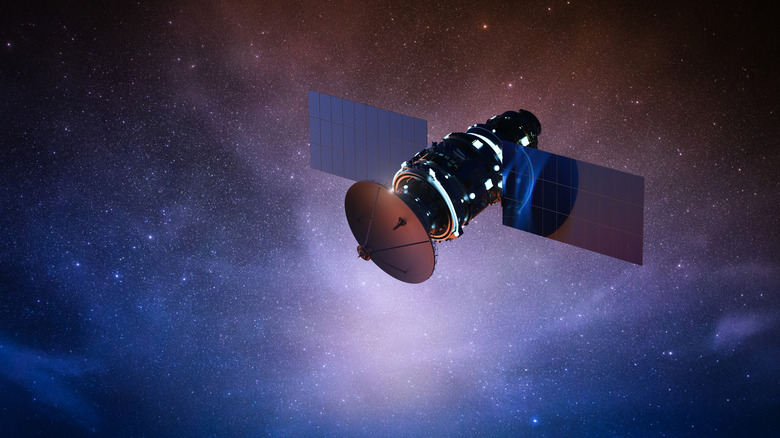What Happened To NASA's Kepler Space Telescope?
Launched by NASA in 2009, the Kepler space telescope was outfitted with equipment to discover and study Earth-sized planets in the Milky Way galaxy. It was named after the 17th century scientist and astronomer Johannes Kepler, renowned for his laws of planetary motion. It was a fitting name that served the telescope, its equipment, and its mission well. But while we heard a lot concerning the telescope's discoveries around that time, things have since gone quiet. Whatever happened to NASA's Kepler space telescope? It ran out of gas.
Kepler was officially retired back in 2018, with NASA making a public announcement in October of that year. Its last light image is pretty spectacular for a final capture all things considered. Kepler spent nearly a decade in deep space (it orbits the sun, not the Earth) collecting data and remains in a safe orbit today.
Kepler was responsible for the discovery of over 2,600 exoplanets. According to NASA, it was more than successful in its mission and has "opened our eyes to the diversity of planets that exist in our galaxy." Data analysis points to 20 to 50 percent of the stars visible in the night sky as likely harboring "small, possibly rocky planets similar in size to Earth" that orbit in the habitable zone of their parent stars. Could that mean there's another Earth out there? Possibly. But thanks to Kepler we know that's much more likely.
Where is Kepler now?
Unlike NASA's Cassini probe, which burned up in the atmosphere of Saturn, Kepler has been left to orbit safely around the sun. Before being decommissioned, all systems were shut down, and it was effectively turned into a floating hunk of debris. All of the data collected by Kepler, on the thousands of exoplanets, is now available for public reference at the Barbara A. Mikulski Archive for Space Telescopes. It's also used for interstellar research and astronomical discoveries, making it a valuable collection of information even today.
Kepler is an exemplary look at how space technologies are expanding our knowledge of not just our own galaxy, but also the wider universe. Of course, other NASA telescopes and orbiting equipment are building upon that vast wealth of knowledge, too. Hubble spotted bizarre space objects that defy classification before, and James Webb is now largely responsible for changing how we look at the universe beyond. We can finally see dark matter, observe star formations, and spot unique and interesting galaxies far, far away. Kepler was one of the most notable missions for observing exoplanets surrounding us, but it also paved the way for future missions like we're seeing now.

